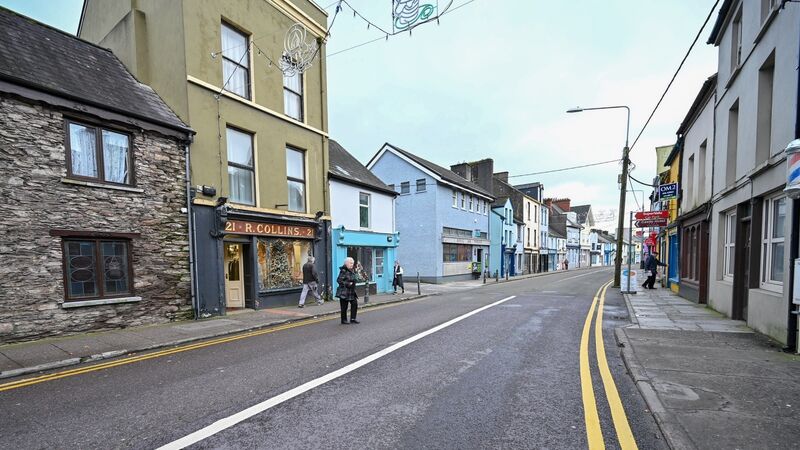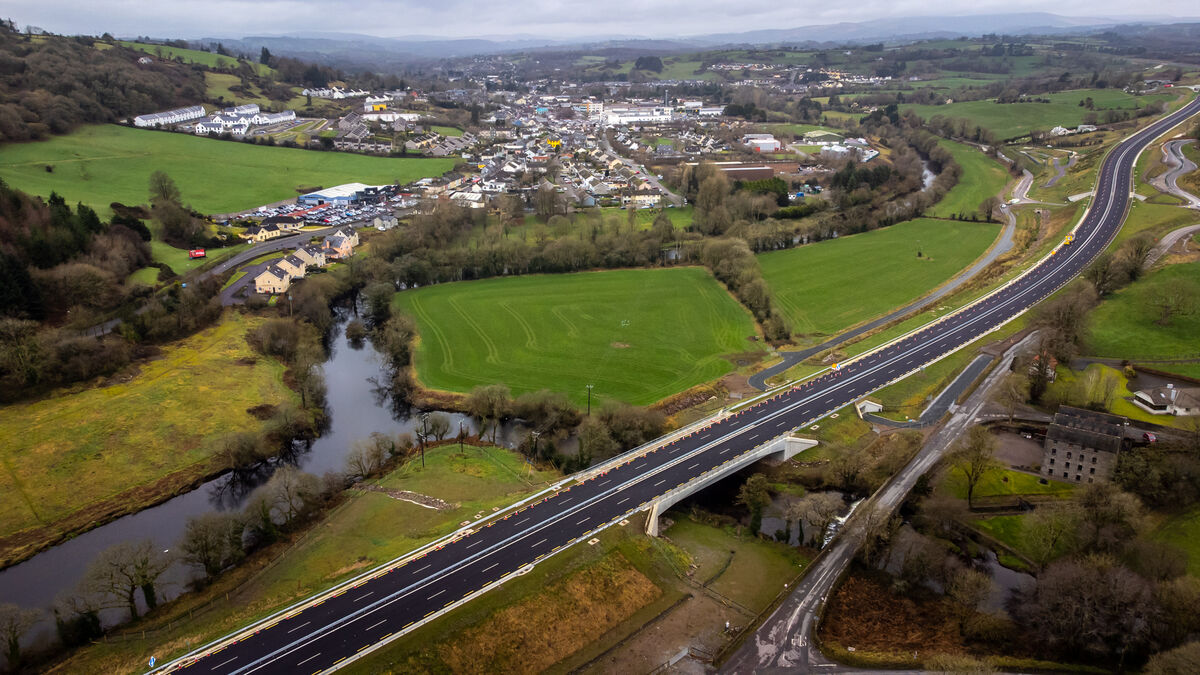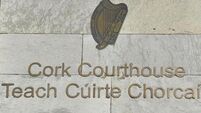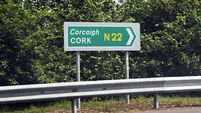Macroom bypass reduces traffic and pollution in town, but cycling rates remain low — study

The traffic in Macroom town centre ifollowing the opening of the bypass n December last year. Picture: Chani Anderson
Traffic levels have reduced significantly, while air and noise pollution have also diminished in a Cork town a year after its multi-million euro bypass opened.
A study into the effectiveness of the Macroom bypass in Co Cork also found that footfall in the town is up 25% but cycling rates remain low since the new road redirected traffic around the town.
But while the Transport Infrastructure Ireland (TII) study on the impact of the Macroom bypass showed positive impacts on noise, traffic, footfall and local businesses, it said there are other areas that it needs to closely monitor.
Among them is an increase in the rate of people using their car to access the town and the very low rate of cycling.
The details are contained in the ‘bypass impact evaluation’ report on Macroom — the first of six such reports it is planning to publish on Irish towns which either have been, or are about to be, bypassed.
Over the past 18 months, TII has carried out baseline studies in five towns bypassed by TII-funded national road schemes — Macroom, Westport, Moycullen, Baile Bhuirne and Listowel — collecting data on air and noise quality, travel modes, impacts on local business, impacts on congestion, town dereliction, road safety, and more.

Planning is underway for a baseline study for a sixth bypassed town, Adare, to start this year.
The first of these bypasses, in Macroom, opened in sections, the first element opening to traffic on December 9, 2022, and it became fully operational on November 6 last.
TII, with support from Cork County Council and the N22 Project Team, collected a raft of data before the opening, and repeated the analysis last December, comparing the results, which show:
- A 40% reduction in overall traffic, down from an average of 13,350 vehicles per day (both directions) in the two weeks before the bypass opened to 7,900 in a two-week period in March of the following year;
- a 60% reduction in medium and heavy goods vehicles through the town, from 1,770 per day to 700;
- footfall in the town centre is up over 25%;
- Noise pollution is down as is air pollution, with reduced NOx (nitrogen oxide) levels at all three sampling sites in the town, and reductions in NO2 (nitrogen dioxide) across two of the three sites;
- of 25 businesses surveyed, 12 said they experienced positive or very positive impacts on their business, 12 reported no impact on their business, and only one reported a negative impact;
- 18 out of the 25 saw increases in the number of customers and 12 saw increases in their turnover, with none reporting significant decreases in customers or turnover;
- a substantial increase in children walking to school, from 39% to 58%.
But some findings are of concern, TII said, including the fact that no children cycle to school, and there has been an increase in the rate of driving into the town.
The report shows that in 2022, when people were asked how they travelled to the town centre for shopping or leisure, 64% went by private vehicle and 33% walked.
When they were asked the same question after the bypass opened, 72% travelled by private vehicle, up 8%, which is mirrored in the reduction of people walking, down 8%.
TII said it will be important to re-measure this when the study is repeated around the five-year mark, to see how it changes in response to planned active travel and public realm works in the town.















